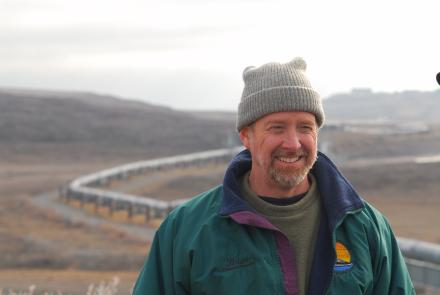
Alaska glaciers help drive rise in sea level
Geophysical Institute researcher Regine Hock and her colleague Valentina Radic have calculated that the rate of sea-level rise due to the meltwater from glaciers in Alaska and elsewhere will increase by as much as 60 percent by the year 2100. Half of the world’s smallest glaciers may not survive that long.
Many glaciers smaller than about five square kilometers — like those in the European Alps, New Zealand, Scandinavia and Glacier National Park in Montana — will disappear by the end of this century, said Radic, a researcher at the University of British Columbia and former graduate student at the Geophysical Institute. She and Hock authored a paper on their meltwater calculations that appeared in Nature Geoscience on Jan. 9, 2011.
According to Radic and Hock, the contribution to rising sea level from melting glaciers outside the massive ice sheets in Antarctica and Greenland will grow by the end of the century to about 1.6 millimeters per year from the current 1 millimeter per year.
“This is significant even though the total over 100 years (around 12 centimeters or 4.6 inches) may not sound like much,” Hock said.
The expansion of ocean water resulting from warmer air is responsible for about one-quarter of the world’s current sea-level rise of approximately 2.5 millimeters each year (roughly 1/10th of an inch). Additional rise is attributed to meltwater coming from ice that formed during colder periods of Earth’s past. Currently, about half of the water gushing to the sea from glaciers comes from Alaska and mountainous areas other than Antarctica and Greenland.
Radic and Hock wanted to sum up how much water the world’s smaller bodies of ice were contributing to sea level rise because other scientists had overlooked mountain glaciers like those in Alaska and Canada. Even though Antarctica and Greenland account for 99 percent of all the ice-bound water on the planet, the meltwater from smaller glaciers has caused about 40 percent of recent sea-level rise.
“(It’s) because they are in warmer climates,” Hock said of rivers of ice like Alaska’s Yakutat Glacier, which formed at such a low elevation that warmer air is now causing it to disappear. “The Greenland and especially the Antarctic ice sheets are so much colder. It doesn’t matter if the climate there warms from minus 40 to minus 35; the ice still won't melt. But it makes a lot of difference for glaciers where temperatures are around the freezing point (which includes most of those in Alaska).”
Radic and Hock used 10 global climate models to predict changes in 120,000 of the world’s mountain glaciers. They calculated that the two main contributors to global mountain glacier and ice cap shrinkage by 2100 would be Alaska and arctic Canada. Alaska will lose 40 percent of its glacier ice volume in that time, according to simulations, and the European Alps and New Zealand will lose three-quarters of their glacier ice.
Predictions for an increased rate of smaller glaciers turning into ocean are conservative, Radic and Hock wrote, because they do not account for the water in icebergs from glaciers that calve into the sea—like Columbia, Hubbard, and hundreds of others in Alaska. In these tidewater glaciers, loss of glacial ice to calving sometimes exceeds the amount that melts. Scientists have not come up with an accurate method to quantify that ice loss, but Hock’s colleagues at the Geophysical Institute are getting closer to an answer as they study the “icequakes” caused by calving ice at glaciers in southern Alaska.






